Publication: Comment
Respected commentator Henry Tapper’s blog post on the “internet of pensions” drove home the message that Information Asymmetry is stunting the effective operation of the pensions industry and called on Internet teccies to help solve the problem.
Tapper’s point is that it is not a lack of raw pension scheme information that is holding the industry back, rather it is the absence of a mechanism to compile that data into a useful format and put it in the hands of the decision makers who can take action based on it. By the time relevant information is put in the hands of the CIO, FD or scheme manager in a format that they can understand and use, it is often too late, or may even prove too costly from the outset. This is an age-old problem in many industries, driven by lethargy to embrace and adopt technology to improve the status-quo. This has been particularly true in pensions, where the adoption of technology until recently has been limited to the use of spreadsheets and other internal valuation systems.
In this respect, Tapper rightly hints at the potential of the Internet to transform the way pension information is obtained and shared. Ultimately, thereis the potential to transform raw data crunched by actuaries or computers into useful information available on-demand to pension scheme decision makers. Indeed, web-based analytics systems such as PFaroe exist to address this exact need, to provide accurate and scheme-specific information in one place for all stakeholders in order to drive better decision making. One of RiskFirst’s clients, National Grid, is a case in point, using web-based analytics as a central platform to improve understanding of the scheme’s sensitivities to certain risk metrics across the board – from the corporate sponsor and trustees to advisors and auditors.
With pension scheme trustees, sponsors and their consultants able to access the same data on demand to drive discussions, we can therefore be more confident that increasingly the right numbers are with the right people.




